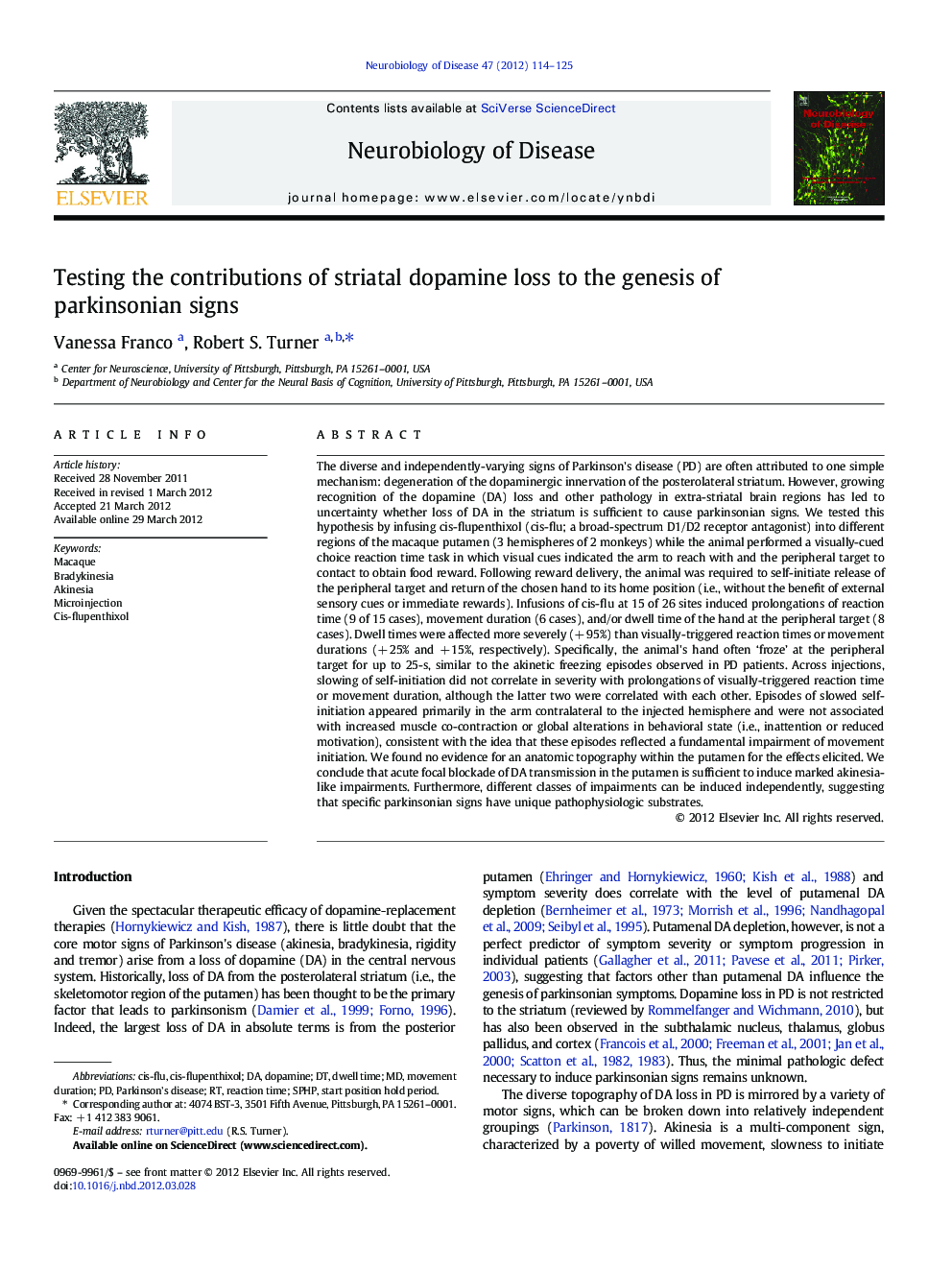| کد مقاله | کد نشریه | سال انتشار | مقاله انگلیسی | نسخه تمام متن |
|---|---|---|---|---|
| 6022584 | 1580681 | 2012 | 12 صفحه PDF | دانلود رایگان |

The diverse and independently-varying signs of Parkinson's disease (PD) are often attributed to one simple mechanism: degeneration of the dopaminergic innervation of the posterolateral striatum. However, growing recognition of the dopamine (DA) loss and other pathology in extra-striatal brain regions has led to uncertainty whether loss of DA in the striatum is sufficient to cause parkinsonian signs. We tested this hypothesis by infusing cis-flupenthixol (cis-flu; a broad-spectrum D1/D2 receptor antagonist) into different regions of the macaque putamen (3 hemispheres of 2 monkeys) while the animal performed a visually-cued choice reaction time task in which visual cues indicated the arm to reach with and the peripheral target to contact to obtain food reward. Following reward delivery, the animal was required to self-initiate release of the peripheral target and return of the chosen hand to its home position (i.e., without the benefit of external sensory cues or immediate rewards). Infusions of cis-flu at 15 of 26 sites induced prolongations of reaction time (9 of 15 cases), movement duration (6 cases), and/or dwell time of the hand at the peripheral target (8 cases). Dwell times were affected more severely (+Â 95%) than visually-triggered reaction times or movement durations (+Â 25% and +Â 15%, respectively). Specifically, the animal's hand often 'froze' at the peripheral target for up to 25-s, similar to the akinetic freezing episodes observed in PD patients. Across injections, slowing of self-initiation did not correlate in severity with prolongations of visually-triggered reaction time or movement duration, although the latter two were correlated with each other. Episodes of slowed self-initiation appeared primarily in the arm contralateral to the injected hemisphere and were not associated with increased muscle co-contraction or global alterations in behavioral state (i.e., inattention or reduced motivation), consistent with the idea that these episodes reflected a fundamental impairment of movement initiation. We found no evidence for an anatomic topography within the putamen for the effects elicited. We conclude that acute focal blockade of DA transmission in the putamen is sufficient to induce marked akinesia-like impairments. Furthermore, different classes of impairments can be induced independently, suggesting that specific parkinsonian signs have unique pathophysiologic substrates.
⺠Is focal striatal dopamine loss sufficient to elicit parkinsonian signs in primates? ⺠D1/D2 antagonist infusion into putamen variably elicited akinesia and bradykinesia. ⺠Akinesia was most severe for self-initiated non-rewarded reaching movements. ⺠Acute focal blockade of putamenal dopamine is sufficient to induce akinesia. ⺠Elicting individual signs in isolation suggests they have distinct pathophysiologies.
Journal: Neurobiology of Disease - Volume 47, Issue 1, July 2012, Pages 114-125